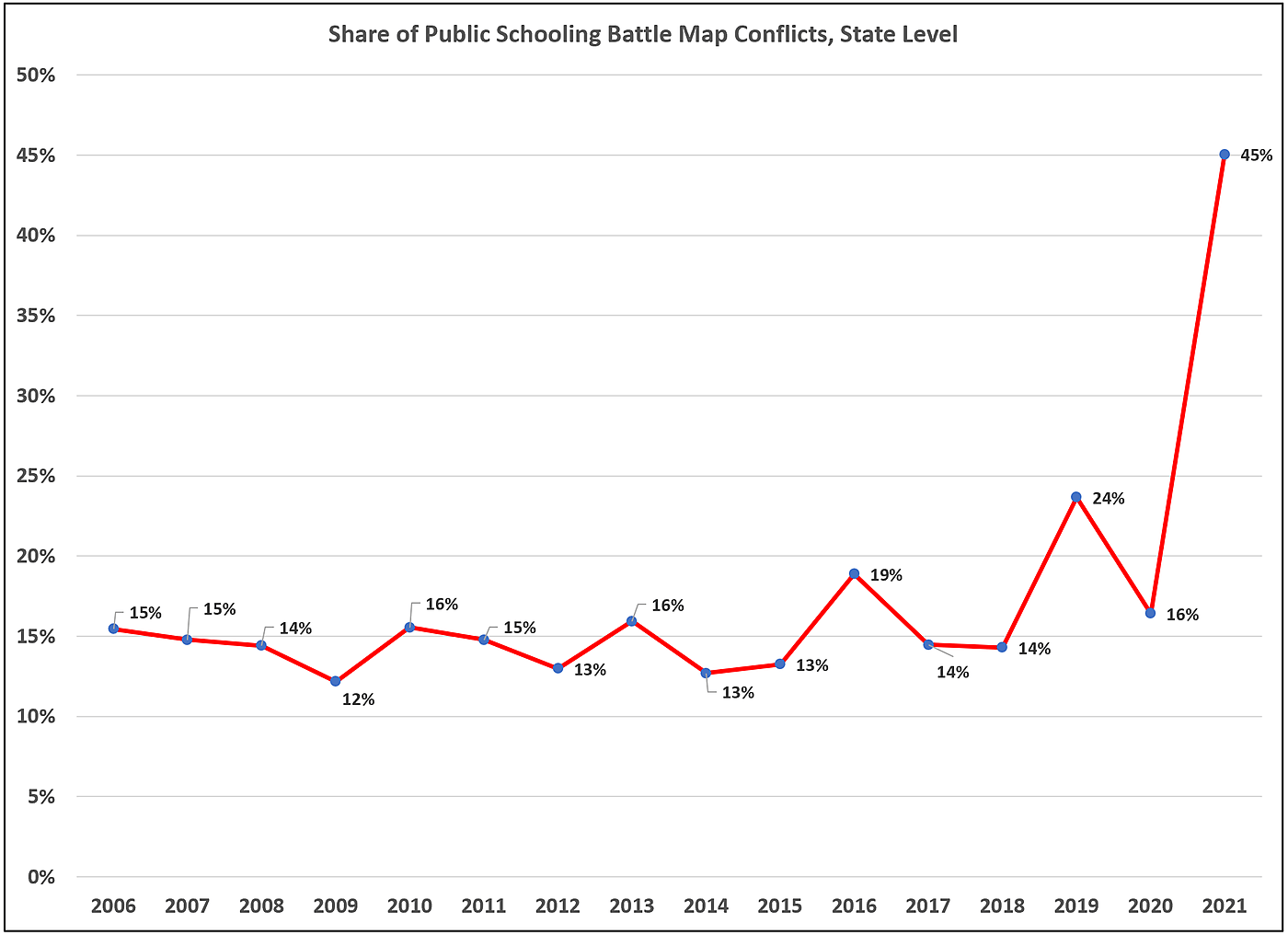This week we entered battle number 2,500 on the Public Schooling Battle Map, which now catalogs a total of 2,507 values- and identity-based conflicts in public schools. These are the most intense of conflicts because they have very personal stakes: whether your children are taught the moral and other values you think they should – or should not – learn, and how you see yourself – your race, religion, etc. – treated in school policies and curricula.
No doubt right now the two highest profile battles of the sorts we catalog on the Map are over the teaching of critical race theory, or other approaches that suggest racism is systemic and perhaps somewhat ingrained in people, and whether transgender girls should be able to participate in girls’ high school athletics. Both appear to be driving a trend that, as you can see in the chart below, may have been developing since 2016, but which seems to have exploded in 2021: state governments, not districts, deciding on policies for all.
Importantly, Map battles are not drawn via representative sampling, and our collections before 2013 have not always been of uniform intensity. That said, assuming we have not disproportionately excluded state-level conflicts in past years relative to district-level battles, the data suggest that many people are no longer trying to settle difference at the local level.
If true, it is bad, but understandable. While it is better to leave decisions to individual communities, which can be very different from each other, than impose a single answer on an entire state, communities also often contain significant diversity. If some people do not agree with policies their districts choose, or that they fear they might select, they have little recourse but to seek their way through higher government. And as the stakes of debates get higher – Will your kids be taught that they are racists? Not “real” girls? – the feeling that one must win grows.
Of course, we could avoid such high-stakes conflicts were we to do what we should have been doing all along: having education funding follow children to chosen educational arrangements rather than forcing all people to fund government schools. But for too long we have not done that, and we may well be looking at the consequence: state governments will decide whose values win and lose for everyone.
That is something no one who values freedom and diversity should want.

